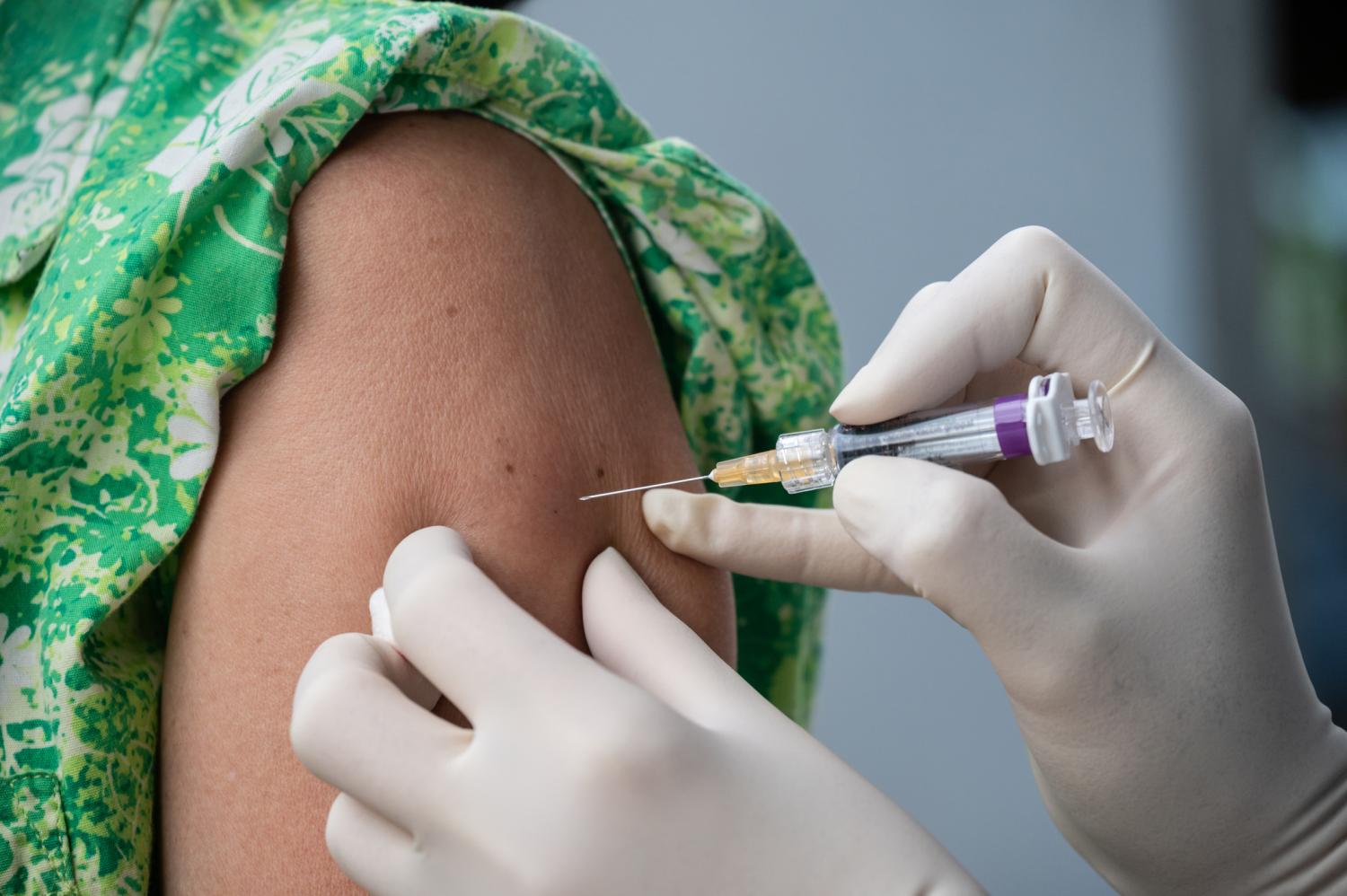Opinion | After covid, here is what the U.S. must do to beat the next pandemic
Opinion | After covid, here is what the U.S. must do to beat the next pandemic The Washington Post


After the 9/11 attacks that killed 2,996 Americans, the United States responded with a sense of urgency and purpose, as a nation under siege. Congress and the executive branch created the 9/11 Commission; established the Department of Homeland Security; set up the Office of the Director of National Intelligence; launched a massive, years-long hunt for the perpetrators; and in many other ways, from airport screening to embassy security, redoubled efforts to prevent another terrorist attack. Now the country is suffering another momentous assault, a pandemic that has claimed about 400 U.S. lives every day for months now and has killed more than 1 million Americans. Yet the nation is twiddling its thumbs.
The pandemic’s lessons are plentiful and the threat is real, yet the preparation for next time — the ambitious, can-do spirit of the United States — is almost completely absent. Pandemic preparedness — the action needed to turn the lessons from the nation’s covid-19 response into reality — must be an urgent priority for the White House, Congress and the American people. Preparedness means having everything in place the day before it is needed, and no one knows when that will be.
It isn’t enough to tweak organization charts and polish briefing papers. Rather, what’s needed is a sustained, wide-ranging transformation in how the United States handles public health. Public health refers to “what we as a society do collectively to assure the conditions in which people can be healthy,” the Institute of Medicine wrote in a landmark 1988 report. We have the raw material: scientific knowledge, innovation and wealth. But we need better policies, programs and practices to marshal these assets.
Unless the country changes course, more crises will come, perhaps quickly. Monkeypox, rarely seen outside of Africa, has spread in the United States from almost nothing to more than 16,920 cases in little more than three months, overwhelming public health systems and evading control. Polio virus, largely eliminated from the United States four decades ago, might have been circulating for up to a year, although the public alarm came only when a patient in New York was paralyzed. The first severe acute respiratory syndrome, or SARS, was highly pathogenic and killed 774 people, with a case fatality rate of about 10 percent; the next novel coronavirus, Middle East respiratory syndrome, had a case fatality rate of 36 percent. Neither was shown to be highly transmissible among humans. However, SARS-CoV-2, also known as covid-19, turned out to be highly transmissible and infected more than 500 million people. With a case fatality rate of 1 percent or less, it still led to at least 6 million deaths — and probably many more. What happens next? What if a coronavirus combines some of these characteristics of virulence and transmissibility? Almost every expert is warning: The dangers of another pandemic are real and severe.
The nation’s experience with covid-19 exposed the risks. The pandemic response was badly fragmented among states and localities. The nation broke into warring camps about whether to be open or to adopt restrictions and whether to mandate masks or vaccines, and a checkerboard of jurisdictions fought against each other for diagnostic tests, supplies and therapeutics. Who can forget President Donald Trump’s tweets — “LIBERATE MICHIGAN!” — attacking Democratic governors who imposed pandemic restrictions?
The splintering hampered efforts to understand what was happening on the ground — data networks failed to connect with each other; some communities were sending in their reports by fax machine. Mr. Trump predicted the virus would disappear and touted treatments that were useless, and his White House hampered the traditional leadership roles of the Centers for Disease Control and Prevention and the Food and Drug Administration. Mr. Trump’s deliberate deception sullied one of the most important elements of an effective public health campaign: clear and transparent communications. This led to a loss of public trust. One of the few things the Trump administration got right was Operation Warp Speed, the breakneck vaccination development effort, which shows that concerted government effort can make a difference.
Unfortunately, neither Congress nor Presidents Trump or Biden were willing to create a 9/11-like national commission to diagnose what went wrong. It would have been invaluable. The Senate’s Health, Education, Labor and Pensions Committee approved in March — with bipartisan support — the Prevent Pandemics Act, which would authorize a national commission, and it contains other useful provisions to modernize supply chains and improve data collection, but its prospects are uncertain, and time is running short in this session of Congress.
Many others have recognized the dangers stemming from lack of readiness. Mr. Biden advanced a national pandemic preparedness plan in March; the Rockefeller Foundation created the Pandemic Prevention Institute; the Commonwealth Fund published a report in June looking ahead; the Center for Strategic and International Studies has examined funding for pandemic preparedness; the Nuclear Threat Initiative’s Global Health Security Index underscored a lack of preparedness worldwide. The Global Health Security Index in October 2019 was instructive. It rated the United States as the most prepared nation in the world for a pandemic — a wealthy country with advanced health capacity and capabilities. Those advantages were squandered when the pandemic occurred. Plans are not the only key — so is execution.
There are many reforms Congress and the White House should embrace.
The federal government must overcome the fragmentation of the nation’s public health system. The 10th Amendment to the Constitution and many Supreme Court rulings have given state governments primary authority to control the spread of dangerous diseases within their jurisdictions. But the dedicated workers in this patchwork of localities are overburdened and underfunded. The Commonwealth Fund report calls for creating a national public health system that would provide more leadership, resources and direction, perhaps led by a new undersecretary or assistant secretary of Health and Human Services. While it wouldn’t replace the work in states and localities, a national public health system would help ensure state and local health departments gain basic capabilities and resources to protect their communities, however different. The report says that government funding for core public health functions remains “grossly insufficient.”
Every virus or bacteria has a genetic blueprint. With advances in bioinformatics, scientists can use genetic sequencing to identify the variant, spot mutations and chart possible spread among people. This ought to be harnessed into a nationwide — or even global — trip wire for disease among humans, animals and plants. We already rely on early-warning systems to watch for hurricanes and tornadoes; radars and satellites keep watch for ballistic missile threats; prompt warning is critical to intelligence gathering and financial markets. But so far, early-warning systems exist only in fragments for disease. Also, there’s a crying need to build better data-sharing systems to improve the link between genomics (genetic blueprints), health care (what doctors, hospitals and emergency rooms are seeing among people) and epidemiology (the patterns of disease in the population).
The nation’s capabilities to create and manufacture vaccines must be strengthened. Operation Warp Speed showed what can be done. With years of previous research, and a mountain of government money, the mRNA coronavirus vaccines were developed and manufactured in record time and saved millions of lives. But the mRNA vaccines are not a long-term answer; their effectiveness wanes. We need a second massive research and development effort, an Operation Warp Speed 2.0, to overcome many hurdles to a coronavirus vaccine that would work against all variants and for a long duration. It won’t be easy. A universal flu vaccine has been an elusive goal for years. In parallel, we need an organized effort to create platforms for future vaccines with enough science and resources behind them to kick-start development as soon as a pandemic flares — to be ready to deploy shots rapidly.
The recent announcement of an overhaul at the CDC made a point to shift the agency’s culture to be more action-oriented in the face of emergencies. The idea is a good one for more than just the CDC. The emergency side of public health should be organized like the military, with money, staffing, a clear command structure, exercises and a mission of urgency.
Finally, the nation’s public health authorities must rebuild trust. In an emergency, public trust is fragile — when broken, it is extremely difficult to regain. Transparency, promptness and clarity were too often missing during this pandemic, and online disinformation further corroded public confidence. A concerted effort must be made to rebuild public trust in the digital age.
The prospects for wide-scale reform do not look good. Partisan conflict on Capitol Hill has stymied further funding to respond to the current pandemic, not to mention prepare for the next one. Where is the willpower that arose after 9/11? Where is the bipartisan consensus that existed during the Cold War? Clearly, the political scene has been clouded by pandemic fatigue and looming elections. But the need for preparedness is not going away.
A transformation in public health requires a sea change in thinking. We must value this endeavor for our own protection, rather than continue to neglect it. We have been warned.


